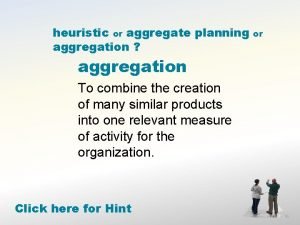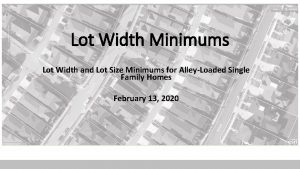DG ENTR Lot 2 framework LIGHT DUTY ELECTRIC










- Slides: 10

DG ENTR – Lot 2 framework LIGHT DUTY ELECTRIC AND HYBRID VEHICLES GRPE/WLTP –DTP Meeting Geneva, 8 June 2011 DG client: • Nikolaus Steininger Contractors: • TRL (James Nelson, Tim Barlow, Alaric Lester, Dinos Visvikis) • Millbrook (Andy Eastlake, Phil Stones) • Ecorys (Robert Kok, Konstantina Laparidou)

Agenda 1. Objectives 2. Tasks 3. Deadlines 4. Task 1 - Overview 5. Task 2 – Overview 6. Next stages

Objectives • To provide end-users and regulators with sufficient information about the vehicle so that: – End-users can make an informed choice when selecting a vehicle – Regulators can design regulatory measures • Create a test regime that reflects real world conditions

Tasks • Task 1 – Review existing legislation, regulations and standards • Task 2 – Review desired stakeholder and consumer data requirements • Task 3 – Determination of limitations, shortcomings and omissions in existing type approval procedures with respect to the identified objectives • Task 4 – Recommendation of modifications and complementary test procedures and next stages (test work required)

Deadlines • Stakeholder input (consumer requirements) regarding utility parameters requested before 27 June 2011 • Stakeholder input (automotive industry) regarding technical developments requested before 14 June 2011 • Final report due September 2011

Task 1: Review of existing legislation Light passenger and commercial vehicles - overview Regulations (EC) No. 715/2007 and 692/2008 § EC No. 715/2007: introduces Euro 5 and Euro 6 emissions limits § EC No. 692/2008: detailed technical requirements and specifications § EC No. 692/2008 refers to UNECE Regulations 83 and 101 for test procedures UNECE Regulation 83 § Emissions limits and technical requirements harmonised with EC legislation (Euro 5 and Euro 6) § Detailed test methods referenced by EC legislation UNECE Regulation 101 § Technical requirements harmonised with EC legislation § Detailed test methods referenced by EC legislation

Task 1: Review of existing legislation Light passenger and commercial vehicles Regulation Test Type 1: Exhaust emissions at ambient conditions Type 2: CO at idling speeds EC No. 692/2008 and UNECE R 83 Type 3: Crankcase gas emissions Type 4: Evaporative emissions Type 5: Durability of pollution control devices Type 6: Average emsissions at low ambient temperatures On-board diagnostics test EC No. 692/2008 and UNECE R 101 CO 2 emissions and fuel consumption Parameters CO; THC; NMHC; NOx; PM; battery state of charge, electric range CO Crankcase pressure THC CO; THC; NMHC; NOx; PM CO; THC; CO 2 CO; NMHC; Nox; PM CO 2; fuel consumption; electric energy consumption; electric range

Task 2: Parameters • Parameters may include: – Electric range (both EV & HEVs, full/empty battery) – Energy consumption (fuel and/or electric) – Maintenance parameters (specifically related to life of major components – e. g. battery pack ) – Performance (speed, acceleration, etc. ) – Durability of batteries – Recharge time (EVs and plug-in HEVs) – Conditional parameters (outside/interior temperatures, journey length, age of battery, etc) – Ancillary loads (aircon, etc) – Etc ◦ Cost can be derived from these parameters, but is no parameter itself

Project kick-off meeting, 11 May 2011 10 Stakeholders in-person plus about 8 using the webconferencing facility Views: • Do not focus on political issues – only on test procedures to collect the relevant data • New legislation should be robust enough to cope with existing and upcoming PHEV technologies • CO 2 not to be considered – only energy & fuel consumption • After Sept, parameters will be further developed over 1 -2 years • WLTP subgroup 4 and this study will be aligned • How can OEMs specify charging time while there are so many elements that might affect it?

Next stages • Complete review of existing legislation – M 1 and N 1 category – L category – WLTP-DTP • Review input from stakeholders – both the automotive industry and consumer groups • Identify parameters from stakeholders and consumers not currently determined for type-approval



















